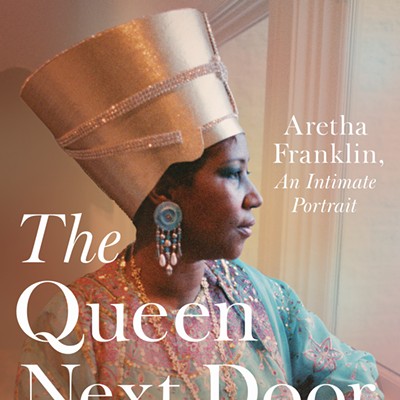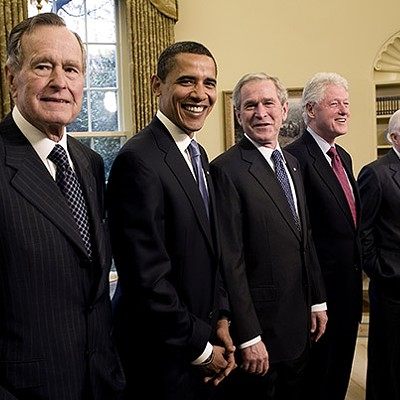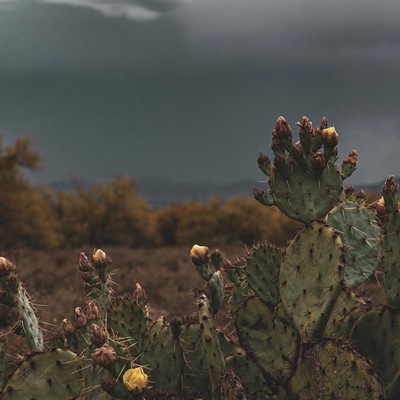He wanted to photograph some treasures in the archive--those famous peppers by Edward Weston--but he wasn't interested in Weston's gorgeous finished prints. Instead, he wanted to shoot his lowly negatives.
Staffer Dianne Nilsen obliged and hauled out Weston's voluminous stash of negatives. She picked a pepper, to wit, "Pepper #35p," and Loengard was immediately smitten. As he wrote later, "I saw that light had arranged particles of silver on its surface with such beauty that it took my breath away."
He photographed Nilsen cradling the negative in her gloved hands. In his strange new version of the pepper, the negative makes the familiar unfamiliar.
Loengard had long been fascinated by negatives. In all the years he'd worked for Time-Life as a picture editor, handling photos by some of the 20th century's best-known photographers, it puzzled him that hardly anyone valued the negatives that gave birth to the prints.
"They are the original of a photo," Loengard says by phone from his home in New York. "Everything else is a copy. They have qualities that make them unique."
Their transparency allows light in. They alter reality, reversing nature's darks and lights, creating a shadow world where white becomes black, and darkness light. As a result, "You look at the negative abstractly. You don't identify (its subject) as easily. You see the pictorial structure."
Eventually, Loengard decided to honor the little-hailed negative in a book, appropriately called Celebrating the Negative. Originally published in 1994, the project has just been given new life as a fine-print portfolio, published by Tucson's Etherton Gallery, where it is available for viewing.
Loengard spent two years tracking down the original negatives of 50 of the most famous black-and-white photographs ever made, visiting museums, archives, family homes and studios on two continents. His goal was not to print them, but to photograph them while someone else--a family member, or curator, or, in the case of Harry Callahan, the photographer himself--held them in his or her hands. The negatives were to become the stars in new works of art.
The search was not easy. Only a few institutions--like the Center for Creative Photography, and the George Eastman House in Rochester--bother to archive negatives. But family members who'd carefully tended their loved ones' negatives were delighted to help.
"Families think negatives are very valuable," Loengard says. "They've kept them."
Luckily, because "photography is young," close relatives of the art form's pioneers were still around in the early 1990s. Loengard enlisted Virginia Adams, widow of Ansel, for a re-visioning of Adams' "Moonrise, Hernández, New Mexico." Rondal Partridge, son of Imogen Cunningham, held his mother's "Magnolia Blossom," and reminisced about his boyhood--when he would toss his mother's discarded negs into the fire and watch them explode.
Callahan, tracked down in his old age, held up his 1958 "Aix-en-Provence" against the window of his apartment building in Atlanta. Loengard returned to the Center for Creative Photography in 1993 to photograph work by modern master Aaron Siskind. He picked a chain of negatives from Siskind's 1956 project, "Pleasures and Terrors of Levitation (#63)," picturing a man against the sky. The negatives are suspended in the bare hands of the center's archivist, Amy Rule.
The many hands that lightly cradle the negatives are important elements in the photos; they convey a respect that borders on tenderness. Partridge's, in particular, suggest the son's love for his long-dead mother.
"Hands are not self-conscious," Loengard notes. "They're easy to photograph. The people who were interested in the negative took it out and held it. Their hands were expressive. The project is as much about hands" as about the negatives.
He made an exception for Margaret Bourke-White's 1945 "Buchenwald," a 1945 image of Holocaust victims that he found at the Time-Life lab. Loengard allowed no hands to interrupt the horror of what Bourke-White's camera caught the day she entered the camp with the Allied troops.
"It seemed wrong to take pleasure (as I knew I would) in a graceful arabesque of fingers next to that terrifying piece of film," he wrote in his book.
Loengard deliberately chose a collection of images that cover nearly every use to which photography has been put: Great men are immortalized, historical moments commemorated. Fragments of everyday life are captured, and reality is fractured into surrealism. Shot by a greatest-hits cavalcade of photographers, the images span nearly the entire history of photography. The earliest, Alexander Gardner's 1863 "Abraham Lincoln," was made from a glass wet-plate negative just 24 years after the birth of photography in 1839. The last, Richard Avedon's "Ronald Fischer, Beekeeper," dates to 1981, in the waning decades of film.
"It's a different way of doing a history of photography," Loengard says. "I was trying in general to have something old (and something new), and to cover the years of photography. It's very subjective ... (but) it serves as a record."
Loengard met up with Terry Etherton early last year when he came to Tucson to visit his daughter. The book is out of print, but Etherton says he had always admired it. And now that digital photography has made negatives nearly obsolete, the gallery owner thought the pictures should be given a second airing.
"This is a great time to do this," says Etherton. "Take a look back at what negatives looked like, how important they are. They used to be everything. Now they're nothing."
The pair winnowed the book's original 50 pictures down to 18, taking care that the images would still provide a photographic history. New York printer Chuck Kelton made the gelatin silver prints under Loengard's supervision, creating just 18 portfolios. With the photographs printed in gelatin silver and housed in a handmade linen box, the portfolio is an "old-school thing," Etherton says, a pointed contrast to contemporary ink-jet printing and digital technology.
When Loengard was finishing the book in 1994, digital was already on its way in.
"I realized that the negative was really an obsolete industrial artifact," he says. As he shot the last picture on film, "It was like being a captain of a clipper ship (in the 19th century) and seeing the first steamship."
He himself occasionally shoots in digital now, and he sees at least one advantage to shutting down the old darkrooms.
"It will make a huge difference in the psyches of photographers. Get them out of the dark and into the light."














